Dance Video Index
In this database, you will find 340 dance videos which were collected in the 2023 and 2024 fiscal year under the auspices of the EPAD (Eternal Performing Arts Archives and Digital Theatre) .
Overview
-
Katsuko Orita – Dance Alone “Final Note in C Minor”
A solo piece choreographed by Katsushi Izumi for Katsuko Orita. The work beautifully draws out Orita's ability to express deep emotions lyrically and subjectively.
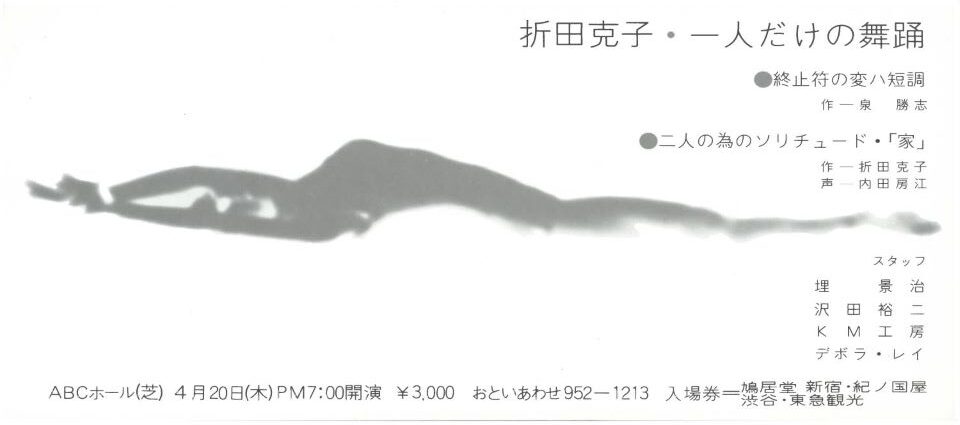
- Performer(s)
- Midori Ishii and Katsuko Orita Dance Studio
- Director/Choreographer
- Katsushi Izumi
- Venue
- ABC Hall
- Year performed
- 1978
-
Fish for Ellen; Night on the grass; What’s wrong
Inaugural performance by Fluid hug-hug Co. led by Kota Yamazaki, featuring three works choreographed, directed and composed by Yamazaki from 1996-2002, all performed by new dancers.
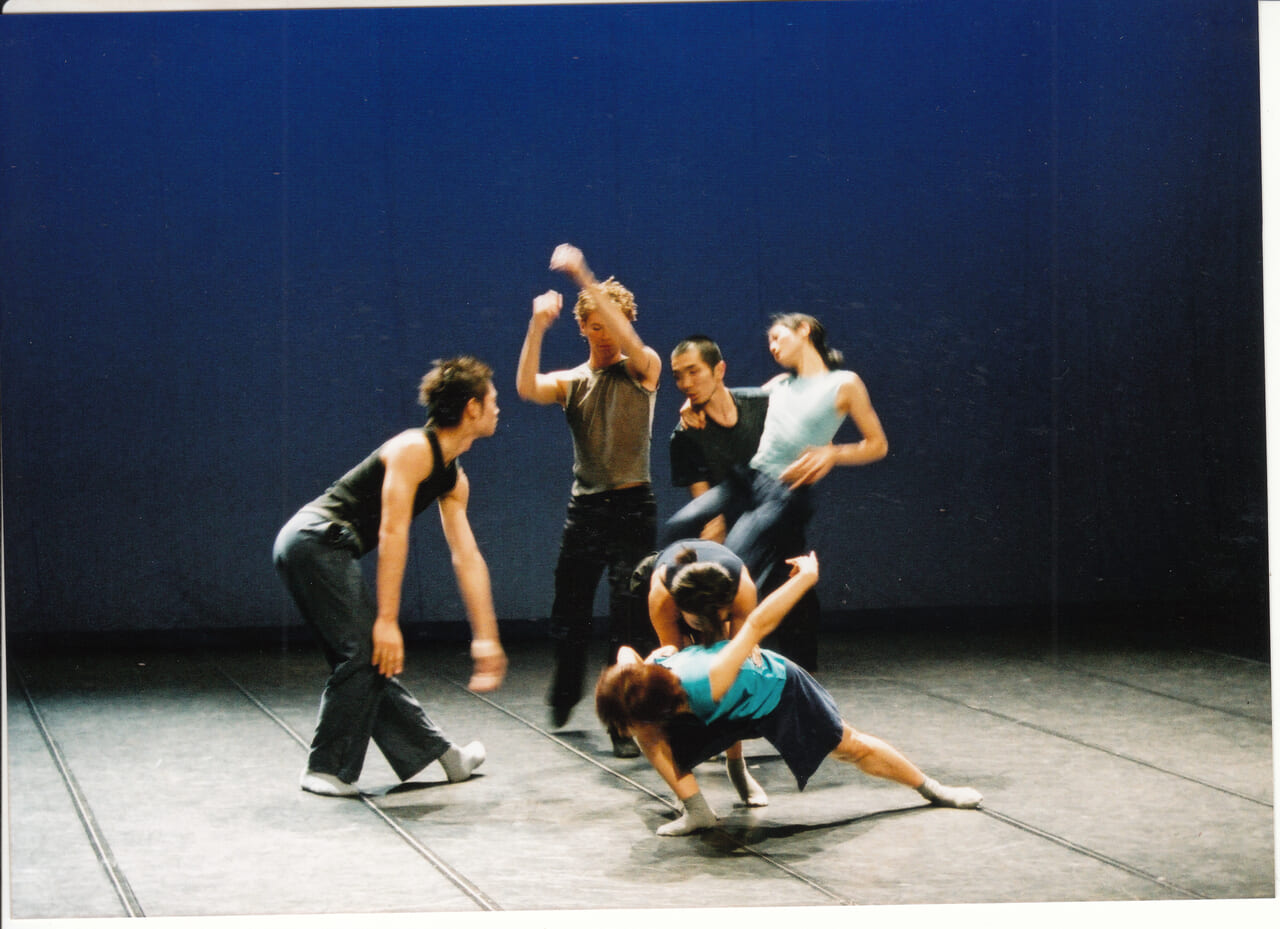
- Performer(s)
- Kaibunsha
- Director/Choreographer
- Kota Yamazaki
- Venue
- Spheremex
- Year performed
- 2002
-
Five Car Pile-Up
Based on a work performed by 100 performers at St. Marks Church in New York City in 1983, the performance was condensed and various angles, slow motion, montage, and soundscapes were used to encompass a space far beyond what we can see. A new visual choreography was created.
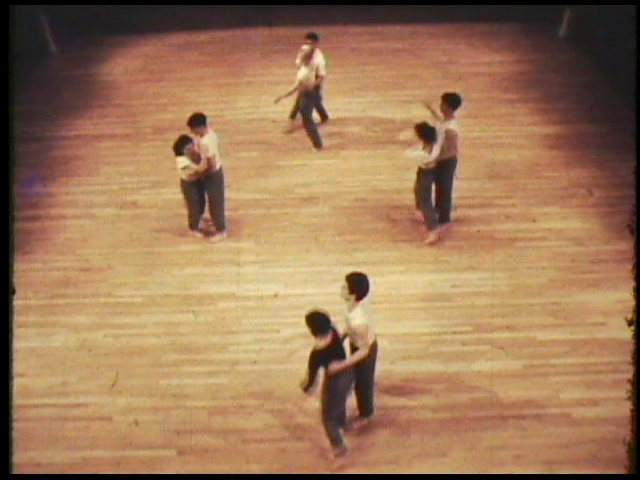
- Performer(s)
- Yoshiko Chuma
- Director/Choreographer
- Yoshiko Chuma
- Year performed
- 1983
-
Floating Garden
"It is said that the medieval dream of building a floating garden is half realised through extravagance.
In the five rooms of the Floating Garden are five dreams, and Izumi opens each door one by one, inviting the audience into rooms of fantasy."
- Katsushi Izumi Dance Opera.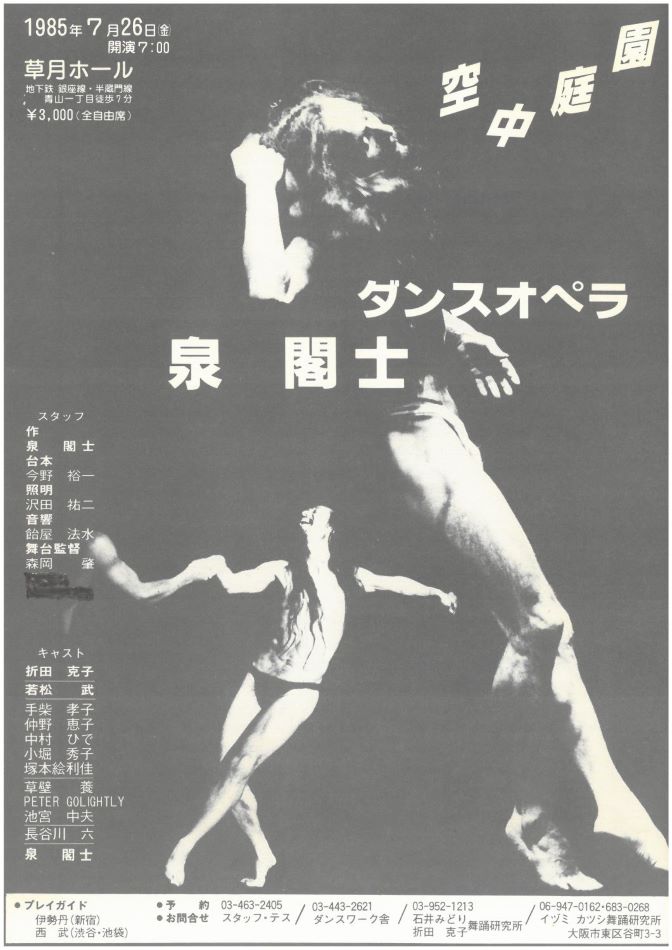
- Performer(s)
- Midori Ishii and Katsuko Orita Dance Studio
- Director/Choreographer
- Katsushi Izumi
- Venue
- Sogetsu Hall
- Year performed
- 1985
-
Frankenstein’s Fable
The story of an imperfect life form born from a doctor's obsession with life.
Unable to accept the death of a loved one. People who wish for a happy future with their loved ones.
A man is removed from the circle of reincarnation, from life to death, and from death to life, and is broken.
The doctor was exposed to the mystery of life, and wanted to know everything.
A horribly tragic fable.
- Participated in the ACA National Arts Festival 1980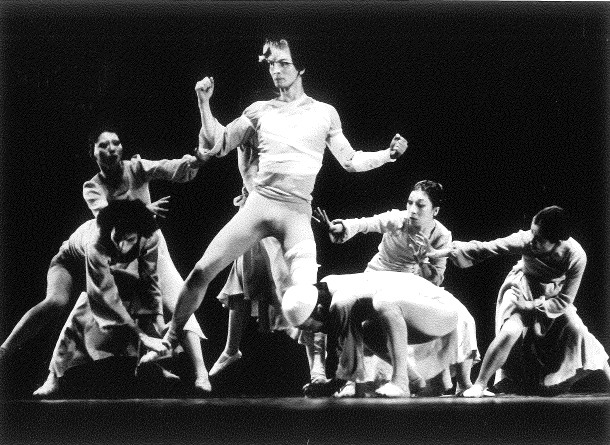
- Performer(s)
- Wakamatsu Miki & Tsuda Ikuko Free Dance Performance
- Director/Choreographer
- Miki Wakamatsu, Ikuko Tsuda
- Venue
- Yomiuri Hall
- Year performed
- 1980
-
From Darkness to Light
There are two types of death dances: Danses des Morts, rooted in religion, and Danses Macabres, where the living also have a little fun with death. There is a legacy of 'death-loving cultures' all over the world. Population booms always follow mass deaths caused by famine and war. I began to realise that life is valued only through death after experiencing the death of several of my own loved ones, and that the performing arts are about identifying pain.
My dance has recently become less an art for the gods or the Absolute, and more an art for human beings and their fragility in fleeting life.
- Participated in the ACA National Arts Festival 1979
- Awarded the ACA National Arts Festival 1979 Excellence Award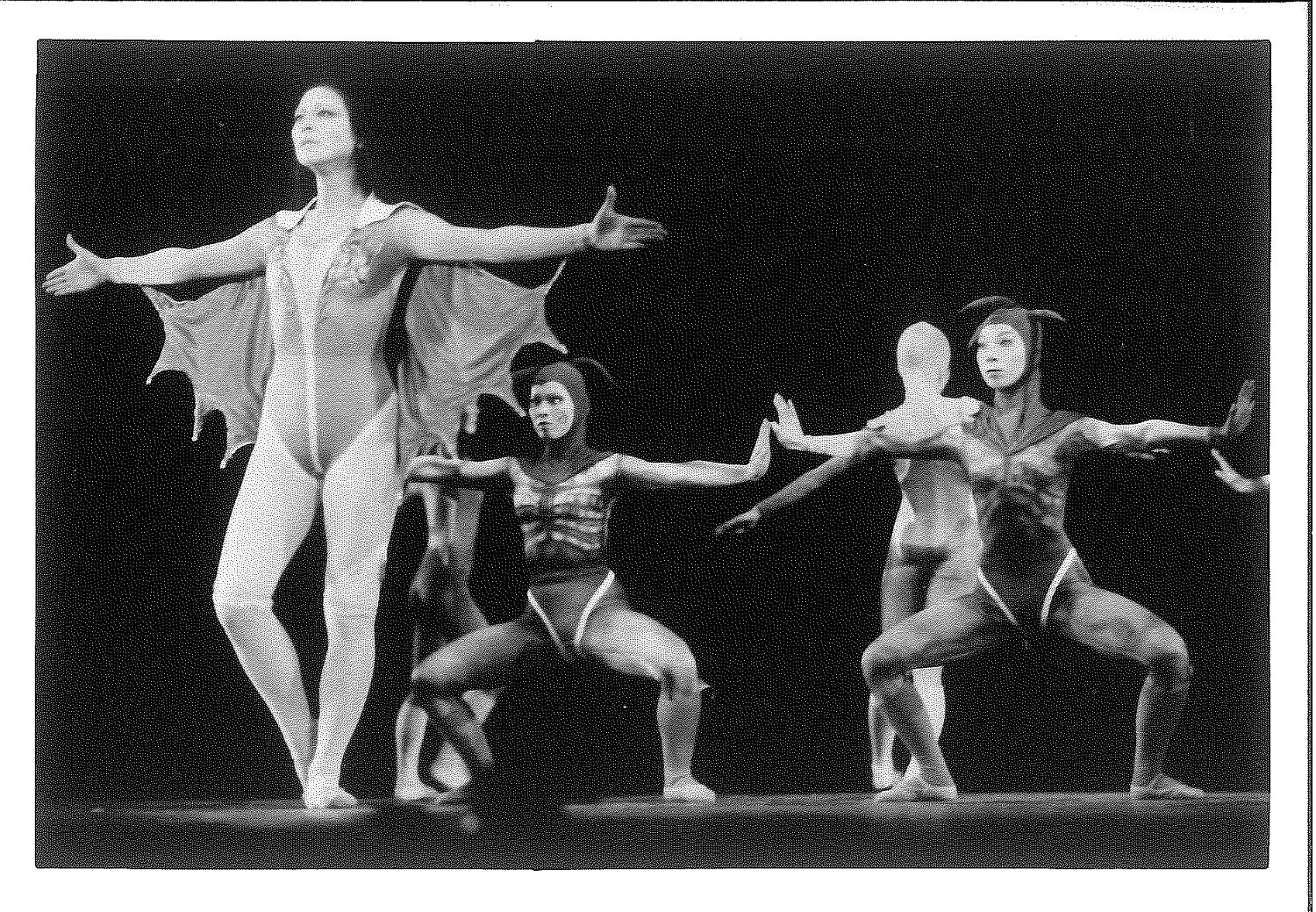
- Performer(s)
- Wakamatsu Miki & Tsuda Ikuko Free Dance Performance
- Director/Choreographer
- Miki Wakamatsu, Ikuko Tsuda
- Venue
- Yomiuri Hall
- Year performed
- 1979
-
Kota Yamazaki’s ‘From Picnic’ and Mikayo Mori’s ‘Solo & Soul’
'From Picnic' is a fleeting dance in which the last man dances ""for someone he cannot see"". It is a development of Kota Yamazaki's 'Picnic', which was presented at Spiral Hall in Tokyo in July 1997.
Mikayo Mori performed 'Solo & Soul'. In this piece, she connected with what emerges on the other side of her own intentions, from the space between her thoughts and the energy of feelings that occur when different thoughts and images pass through her body to the outside.
- Participated in the 4th OSAKA DANCE EXPERIENCE Dancce Battle - Before Dance / After Dance - Kota Yamazaki x Mikayo Mori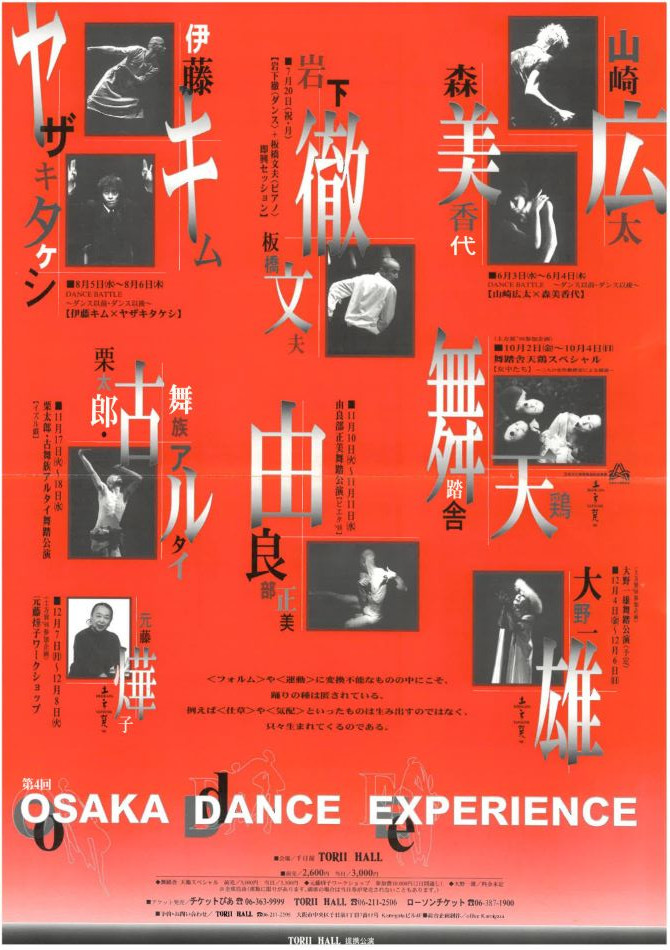
- Performer(s)
- TORII HALL
- Director/Choreographer
- Kota Yamazaki, Mikayo Mori
- Venue
- TORII HALL
- Year performed
- 1998
-
Fruit of Knowledge
Adam and Eve, encouraged by the serpent, eat the fruit from the tree of knowledge and incur the wrath of God. Forced out of paradise, mankind build a world using knowledge, creating a pleasant urban life.
Humans change and evolve, but they also produce abnormal people. A girl is assaulted, becomes mentally ill and her parents suffer. A group of doctors represent the duality of both Adam and Eve, and the serpent.
During her convalescence, the girl steps on a snake and gets better from the shock.
With the help of the serpent, she returns to the world of knowledge... The myth is reborn in the present day. Human joy is shown to be entangled with nature.
- Participated in the ACA National Arts Festival 1985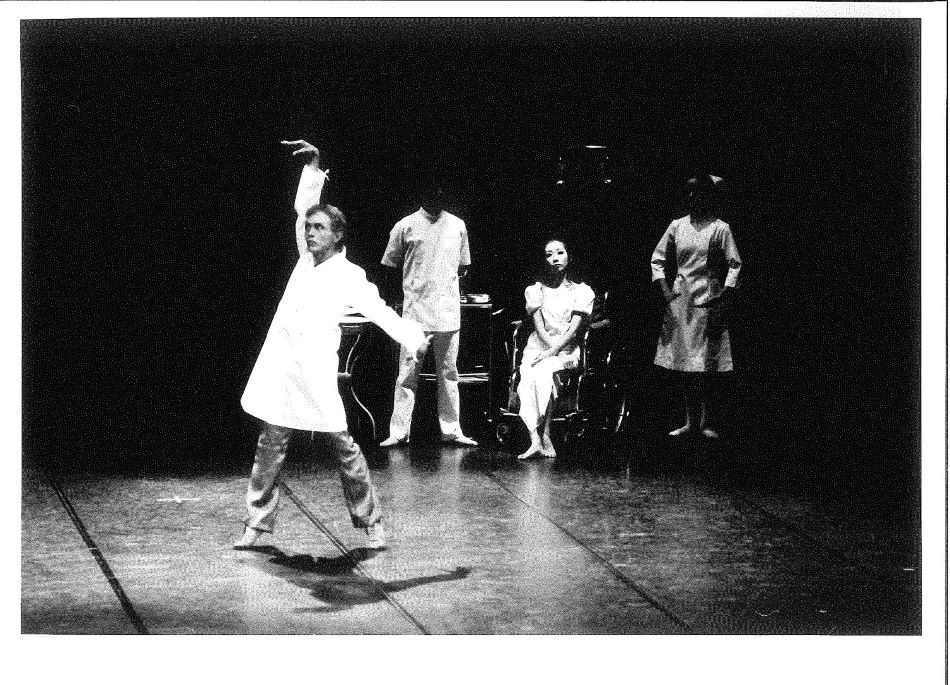
- Performer(s)
- Wakamatsu Miki & Tsuda Ikuko Free Dance Performance
- Director/Choreographer
- Miki Wakamatsu, Ikuko Tsuda
- Venue
- Yomiuri Hall
- Year performed
- 1985
-
Fukushima Mon Amour
Tadashi Endo relocated to Europe in the 1970s to study at the Max Reinhardt Seminar and has since performed extensively in both Germany and Japan. This work reflects his response to the aftermath of the 2011 Tohoku earthquake and tsunami. It explores the devastating impact of the natural disaster, the man-made catastrophe of the nuclear accident, and the collective sorrow of the Japanese people, while also capturing their enduring hope for recovery.
The piece premiered at Theatrewerkstatt in Hannover in October 2012.
- Performer(s)
- Tadashi Endo (Butoh Centre MAMU)
- Director/Choreographer
- Tadashi Endo
- Venue
- Columbia College Chicago
- Year performed
- 2016
-
Furi
Japanese dance can be divided into three main groups: 'mai', 'furi' and 'odori' [all translate to 'dance' in English]. The title of this piece 'Furi' [also meaning 'choreography'] was named after a desire to open up the dynamism of this type of dance to its original meaning. The recorded music was composed for this performance by Koichi Hattori, conducted by Yukinori Tezuka, and performed by Orchestra Sonore, while the artwork was created by the at the time up-and-coming artist James Kawada. Ten female and twelve male dancers were performed the piece, dressed in simple leotards and tights.
- Participated in the ACA National Arts Festival 1971
- Awarded the ACA National Arts Festival 1971 Excellence Award
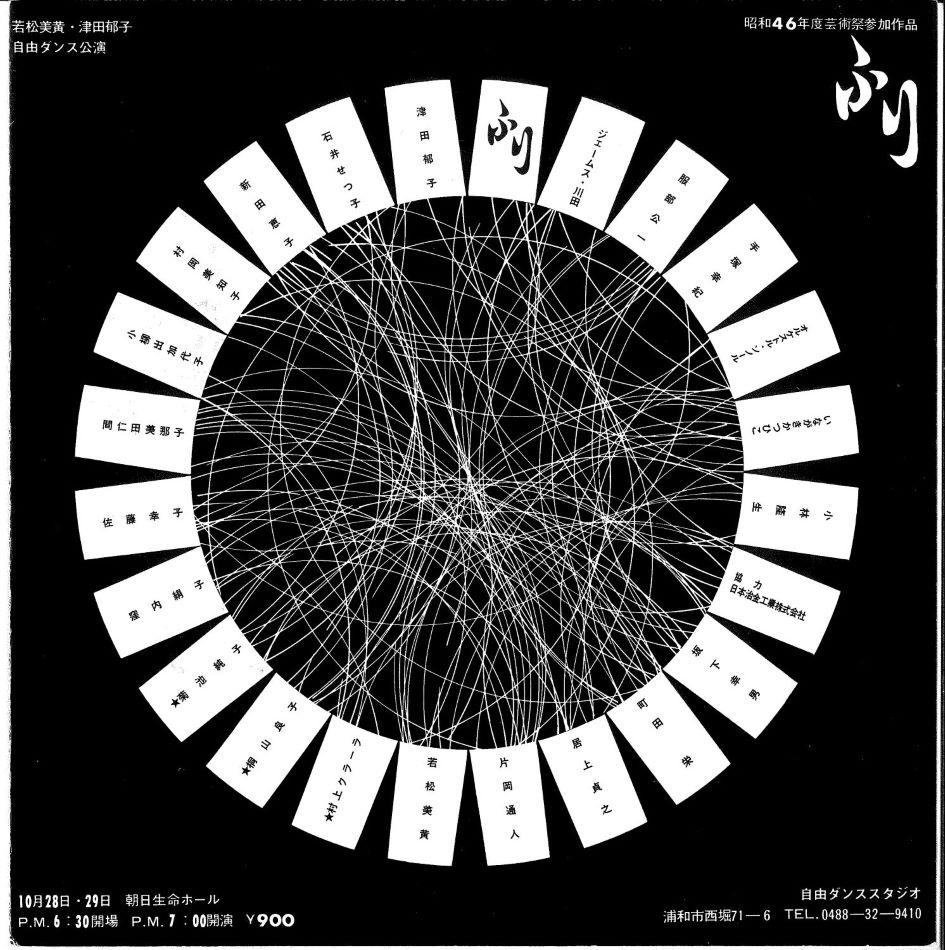
- Performer(s)
- Wakamatsu Miki & Tsuda Ikuko Free Dance Performance
- Director/Choreographer
- Miki Wakamatsu, Ikuko Tsuda
- Venue
- Asahi Seimei Hall
- Year performed
- 1971
-
Galactic Rebellion ’91 – I Just Wanted to Kiss the Moon –
Premiered in June 1989 at the AI Hall in Itami. In this work, the theatre company Taihen - a theatre company for people with disabilities - breaks away from their previous style and creates a new expression developed solely through the movements of the performers' bodies, without fancy costumes or dialogue. Miyajima Ichiro's calligraphy and leotards reveal the movements of the performers clearly and, enhanced with lighting and the use of paper and cloth, a dynamic performance is created. The theme is the liberation of one's own mind and oneness with the universe.
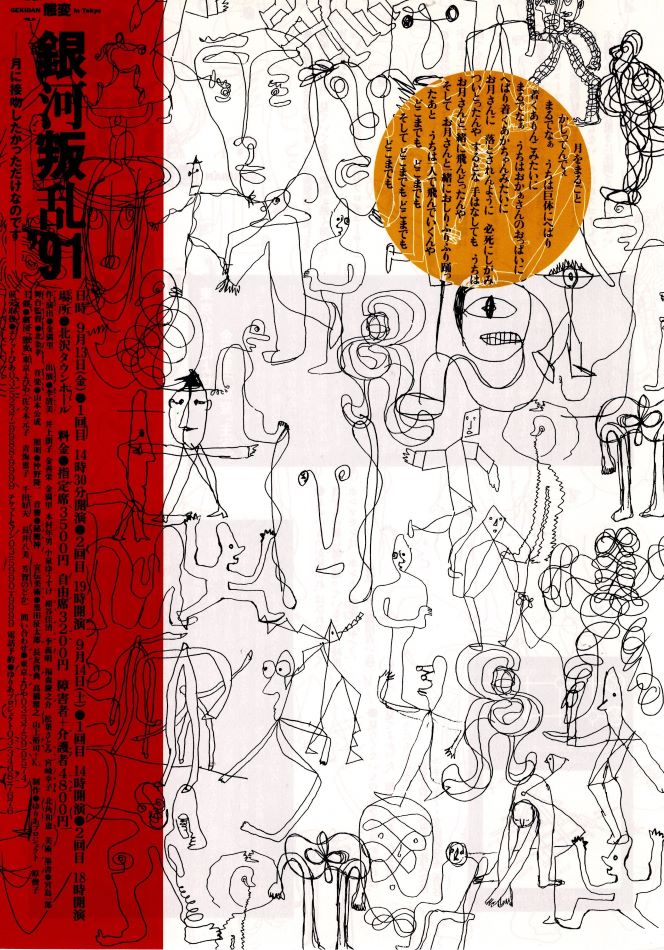
- Performer(s)
- Performance Troupe TAIHEN
- Director/Choreographer
- Manri Kim
- Venue
- Kitazawa Town Hall
- Year performed
- 1991
-
A Genius is Fool
The second piece from the 'THE MUSIC POTLATCH' series, which began in March 1985 and was held at Shibuya Jean-Jean. A different genre of musician was invited to perform alongside Anzu Furukawa's dance in each piece of the series. The first featured Yosuke Yamashita on piano, the third featured Keiko Abe on the marimba, and the final piece featured Yasosuke Kineya on the shamisen.
Act 1: Mendelssohn in Hiroshima
Act 2: Ali Baba and the 40 Thieves
Act 3: The Adventures of Sherlock Holmes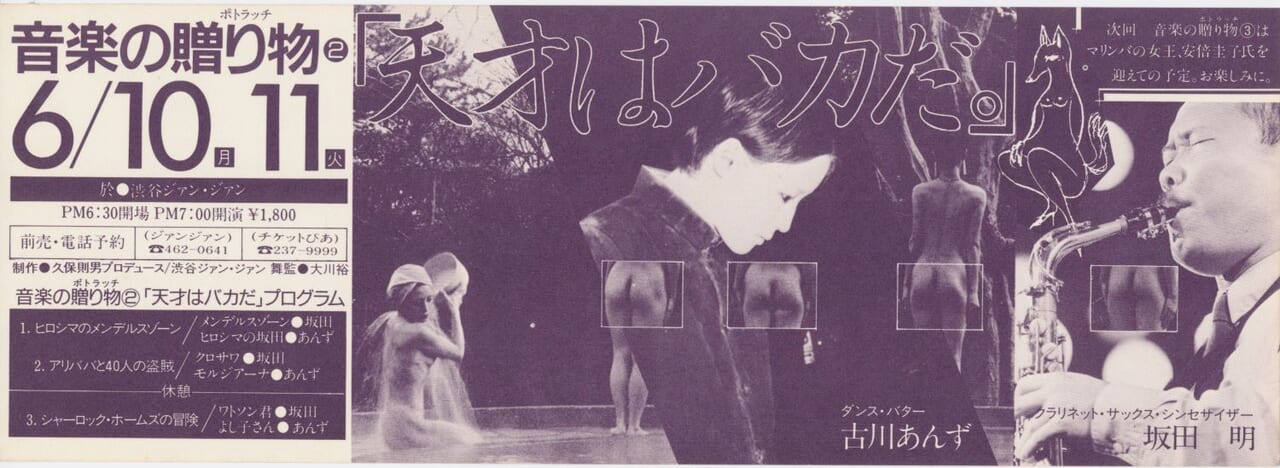
- Performer(s)
- Anzu Furukawa
- Director/Choreographer
- Tetsurou Tamura, Anzu Furukawa
- Venue
- Jean-Jean
- Year performed
- 1985
-
Ghosts and Cherries I
The first in a series of butoh performances titled "The Theater of the Body", which focuses on 'nikutai' [the body as flesh/meat]. The series began in June 2008, and was held on the 29th of every month. The show was structured in two parts: the first part was a free, experimental performance that aimed to "expand the scope of the Butoh genre", and the second part was a solo performance by Nobuo Harada. The three-year series concluded on 29 May 2011.
"The term 'nikutai' is no longer commonly used in discussions of the body, but the word 'shintai' [another word for 'body'] is too clean. I don't want to forget that the nuances embedded in 'nikutai', such as shyness and perverseness, are at the very origin of butoh. I want to draw a line between this and contemporary dance, or other forms that fall within the framework of civil society."
- Nobuo Harada, from an interview by Tamiya Yada, Yomiuri Shimbun evening edition, June 2008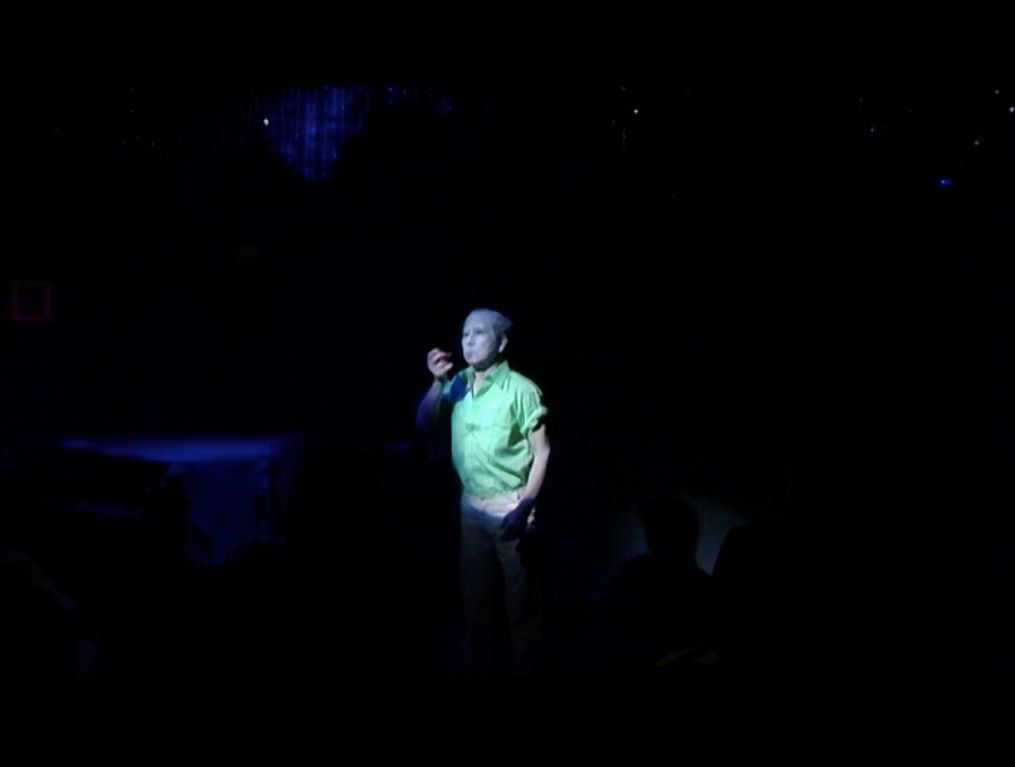
- Performer(s)
- Butoh Seiryukai
- Director/Choreographer
- Nobuo Harada
- Venue
- SPACE TERRA
- Year performed
- 2008
-
Golden Powder Show 1993
The piece was invited to be performed at the Kunsthaus Tacheles (1990-2012) in former East Berlin, which since the fall of the Berlin Wall in 1989 was occupied by avant-garde artists and had became the centre of the Berlin counterculture. In the 1970s and 1980s, when there was very little funding for dance, many butoh dancers earned their living and performance costs through cabaret dancing. The Golden Powder Show can be considered a highlight of cabaret dance.
- Performer(s)
- tatoeba
- Venue
- Kunsthaus Tacheles
- Year performed
- 1993
-
GOYA – La Quinta del Sordo (House of the Deaf)
A "silent opera" inspired by the human tragedy and dark humour of Goya's "Disasters of War" prints. Set to Reich's "Different Trains," which addresses the persecution of Jews under Hitler's regime, the dancers remain tied to their chairs, symbolising that their fate cannot be changed. In creating this piece, Furukawa pointed out that such works are necessary to draw attention to these ongoing tragedies.
Act 1: Morning (music: Steve Reich "Different Trains"; I. America - Before the War / II. Europe - During the War)
Act 2: Noon (music: Steve Reich "Different Trains"; III. After the War)
Act 3: Evening (music: G. Rossini (1792-1868) Highlights from "Il Barviere di Sivigia" [The Barber of Seville])
Text used in the performance: Franz Kafka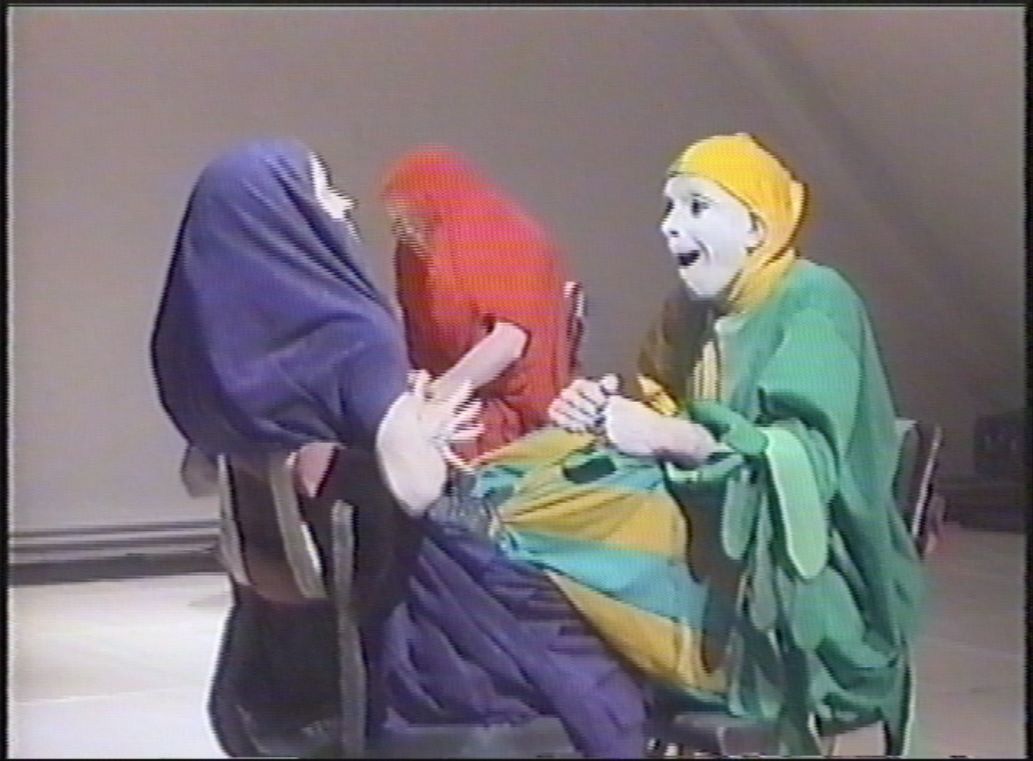
- Performer(s)
- Anzu Furukawa
- Director/Choreographer
- Anzu Furukawa
- Venue
- loplop (Berlin)
- Year performed
- 1999
-
Grain
Created while living in Catskills upstate New York, the piece was premiered in Kampo Cultural Center in 1983 and was performed again as part of Dance Theater Workshop's 1984 winter season, for which Eiko & Koma received the inaugural Bessie New York Performance award.
-Bessie Award (New York Dance and Performance Award)
-Premiere: January 1983 at the Kampo Cultural Center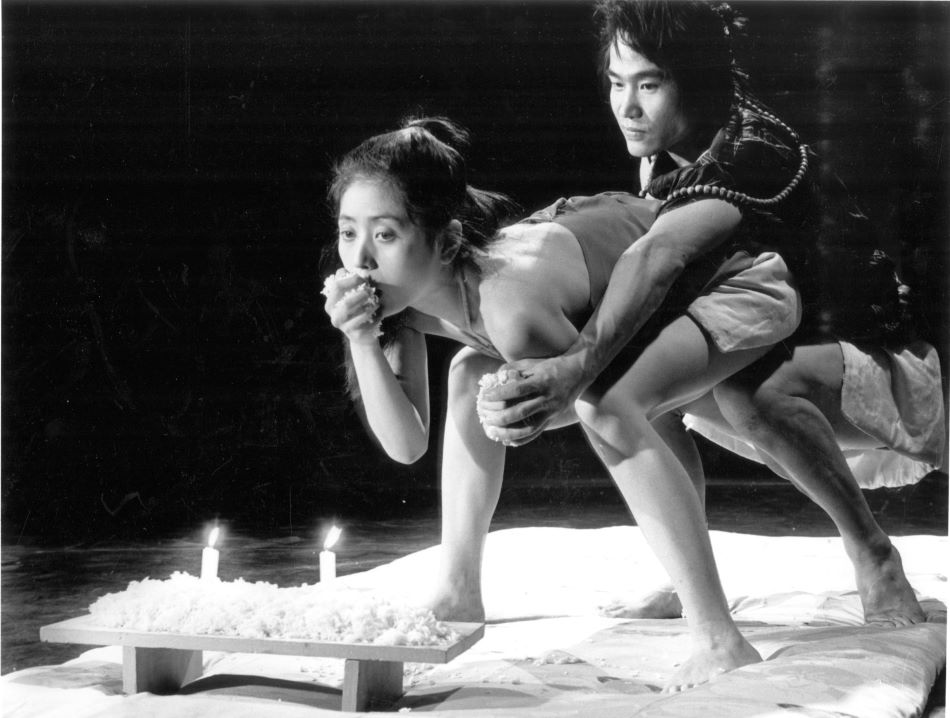
- Performer(s)
- Eiko & Koma
- Director/Choreographer
- Eiko & Koma
- Venue
- American Dance Theater Workshop
- Year performed
- 1984
-
Green Fever
Premiered at the Institut français du Japon - Tokyo. Wrapped in a black costume, Yamada Setsuko transforms her introspective world into movement. Three performers repeat gentle movements like children in a kagura performance. Korean critic Kim Tae-won commented: "I will never forget the shock I felt when I saw Yamada Setsuko for the first time. Her transparent will and precision of technique are the ideals of expressive solo dance". This work, which consciously abstracts reality, clarifies Yamada's unique dance movement and method.
- Participated in the Chang Mu Chum Festival
- Yamada Setsuko Butoh Performance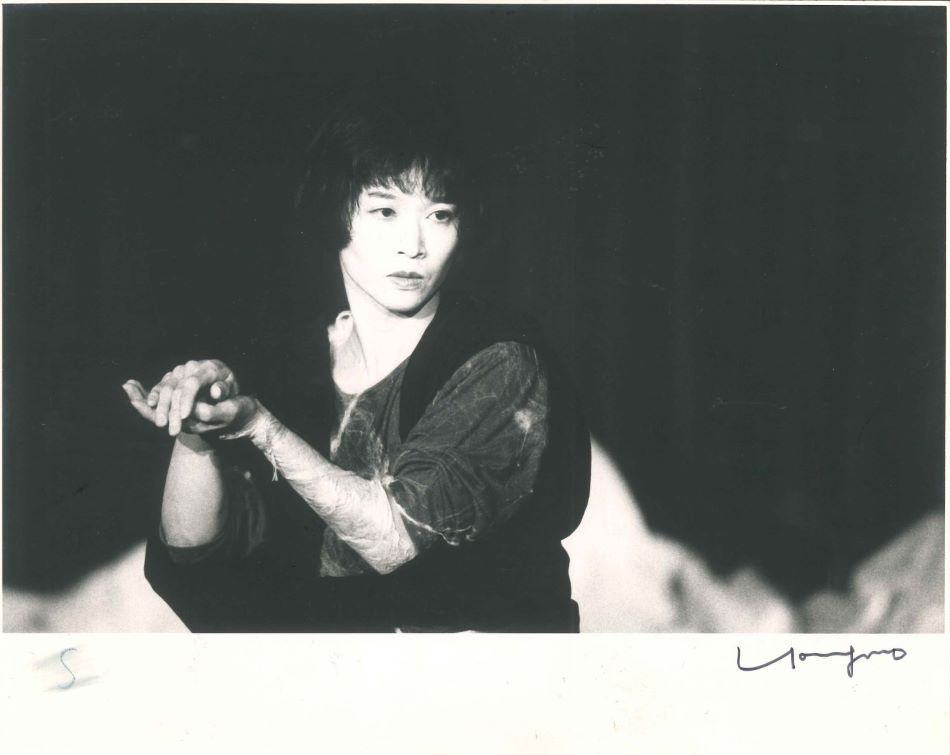
- Performer(s)
- Setsuko Yamada
- Director/Choreographer
- Setsuko Yamada
- Venue
- Chang-Mu Dance Theater
- Year performed
- 1987
-
Guerrilla Kuyo-Kuyo ga onnen (Guerrilla Kuyo-Kuyo is Here with Grudge)
Memorial performance for Guerrilla Kuyo-Kuyo, an actor who died tragically at the age of 30 due to administrative mismanagement.
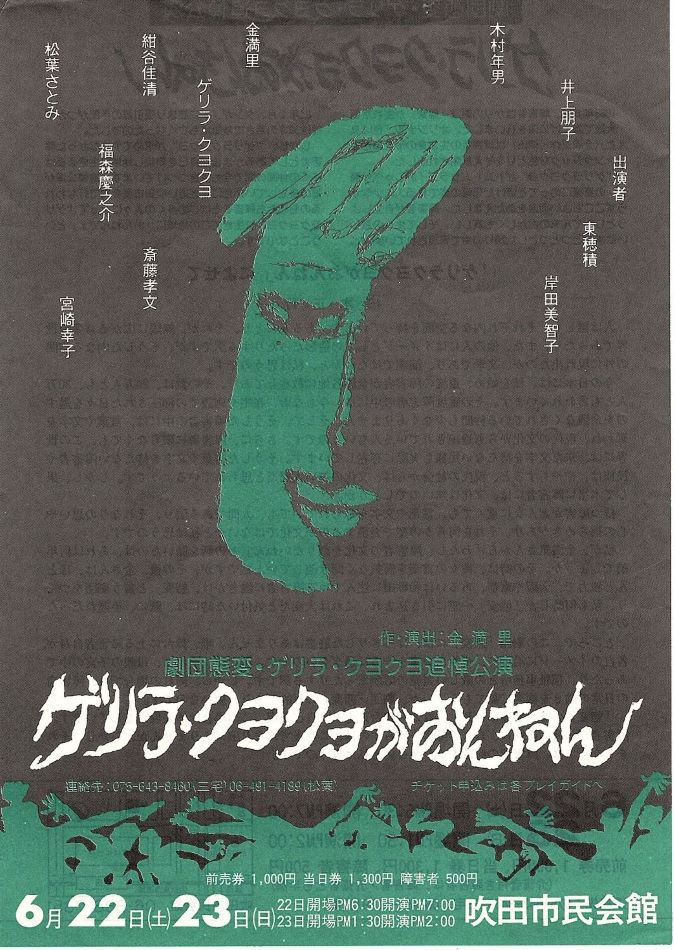
- Performer(s)
- Performance Troupe TAIHEN
- Director/Choreographer
- Manri Kim
- Venue
- Suita City Hall
- Year performed
- 1985
-
Half-Demon (Nama-nari)
A solo performance on 'nudity, immobility and verticality', 'Half-Demon (Nama-nari)' was first performed in 1985 and became a major turning point for Masaki Iwana. Wanting to bring out his inner femininity, he performed for the first time in a European dress. That same year, Iwana began calling his own works 'butoh'. Nama-nari is the Noh mask of a woman with slight protruding horns, before she becomes a hannya [female demon].
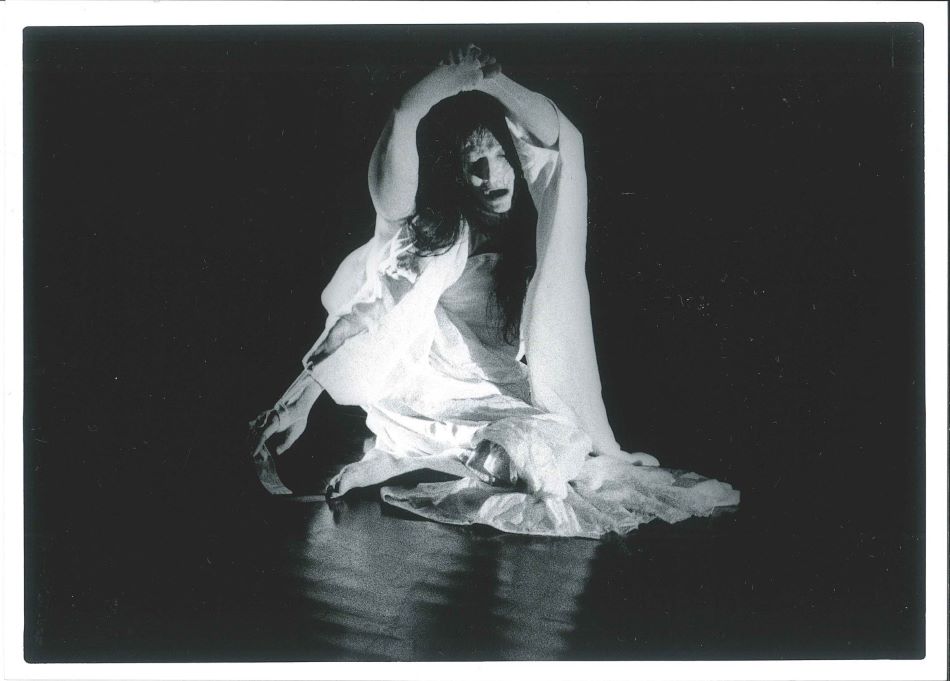
- Performer(s)
- TORII HALL
- Director/Choreographer
- Masaki Iwana
- Venue
- TORII HALL
- Year performed
- 1999
-
HANA-flower-
“HANA” - flower
Open your life to the universe.
Embracing the life of the tribute and the memory of the soul of billion years, the innocence
from darkness to light and death to life is constantly repeated and continues to open.
The beginning of the universe is love.
The flower stares at the stars.
- ONKO Theatre Eocounters' Festival, SOMMERWERFTInt'l Theater Festival, Hybrid Butoh Vienna Art Festival, Paris Butoh Festival
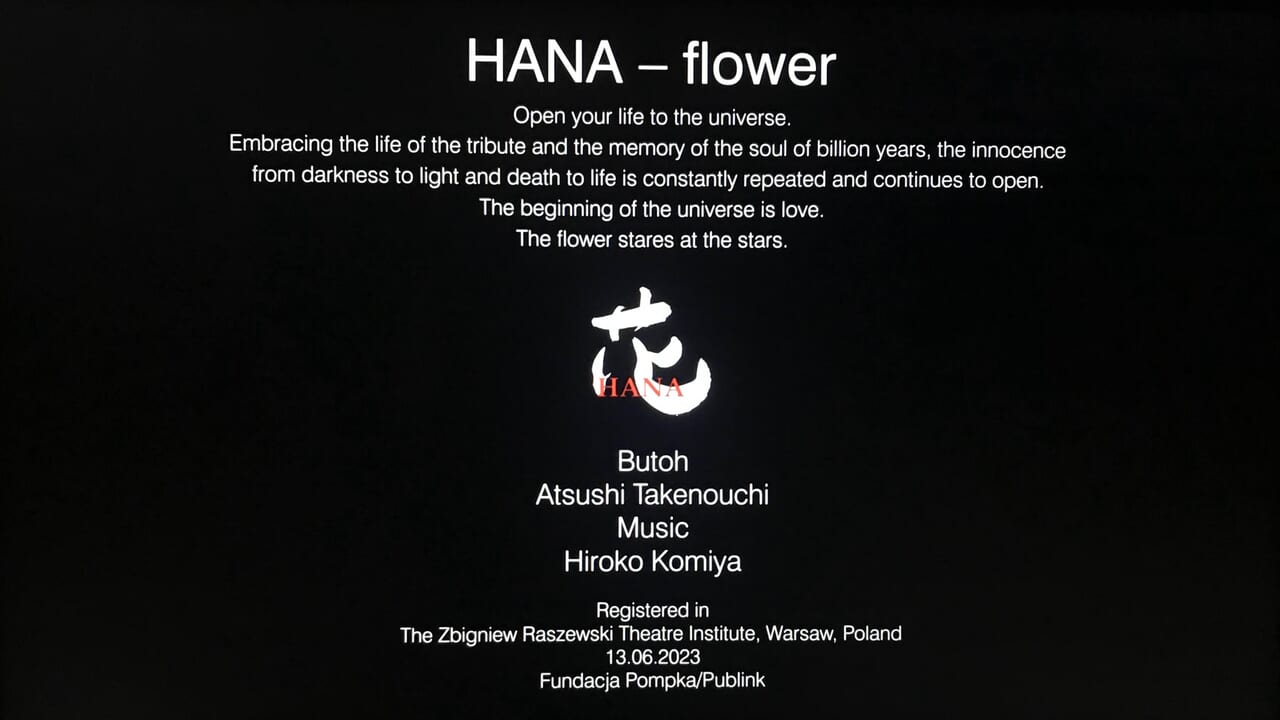
- Performer(s)
- Atsushi Takenouchi
- Director/Choreographer
- Atsushi Takenouchi
- Venue
- The Zbigniew Raszewski Theatre Institute
- Year performed
- 2023
